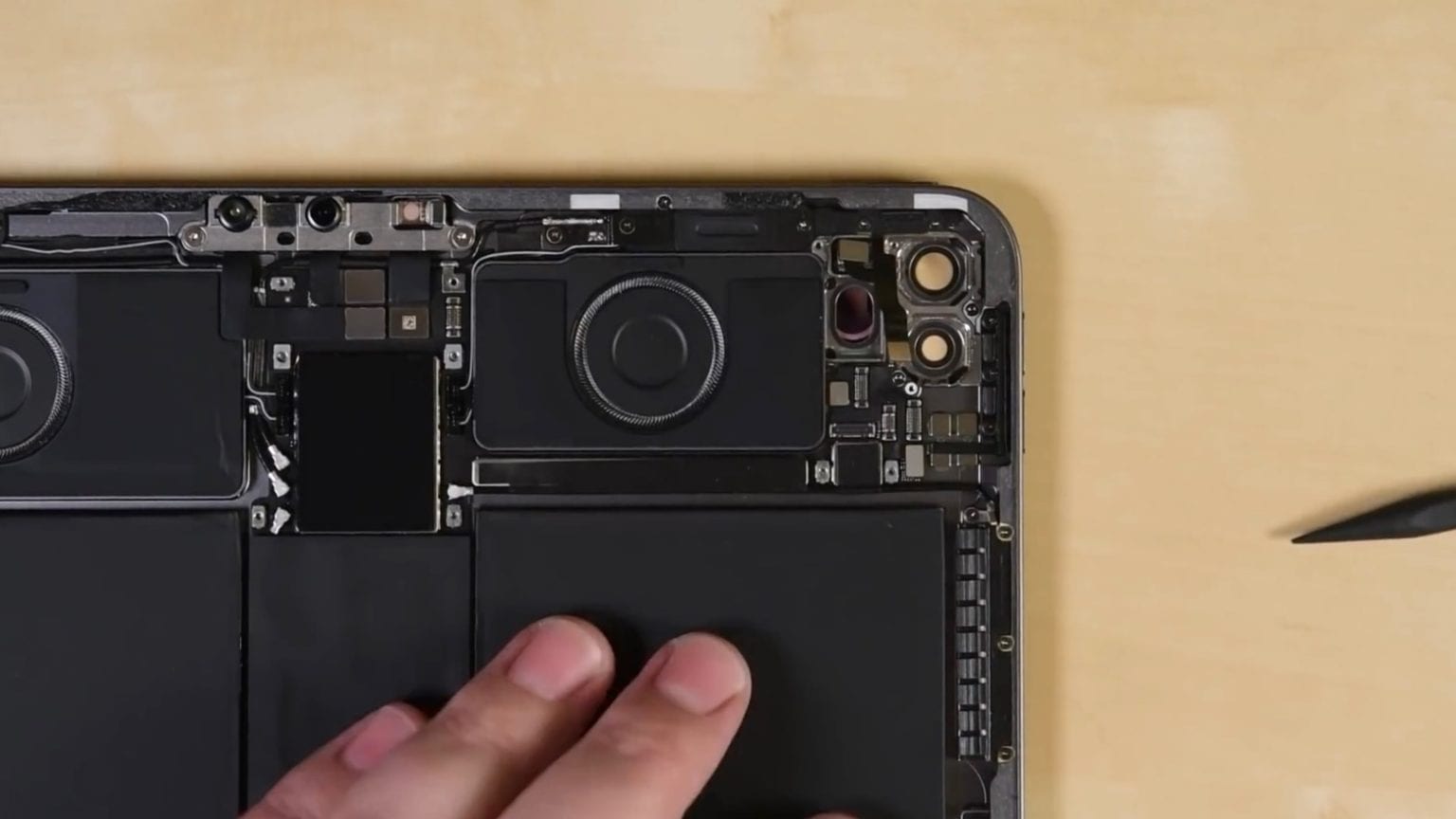A LiDAR scanner is the highlight of the 2020 iPad Pro. So iFixit disassembled this just-released tablet to see how this 3D sensor works. And the company demonstrates why this scanner is not meant to be as accurate as Face ID.
iFixit makes tools to help do-it-yourselfers work on their own computers. To demonstrate the capabilities of these tools, iFixit disassembles nearly all Apple’s products, including the new iPad.
Making the 2020 iPad Pro LiDAR scanner visible
As soon as iFixit pried open the latest iPad Pro, it went straight to the new camera module. This includes the same 12 MP camera as its predecessor, but with a 10MP “Ultra Wide” lens added.
But it’s the third component of the camera module that has made all the headlines. The 2020 iPad Pro is the first Apple device with a LiDAR scanner. This shoots invisible lasers over the entire area in front of of the user, creating a 3D map. Augmented-reality applications use this map to accurately place virtual objects in the real world.
iFixit employed an infrared camera to show the otherwise invisible dots created by this LiDAR system. It then did a comparison with Face ID to show that Apple’s facial-recognition system uses far more infrared dots, and therefore is more accurate.
Still, as iFixit noted, “it [LiDAR] doesn’t really need the same precision as Face ID since it’s mapping room-scale objects, not identifying a specific person’s face.”

Photo: iFixit
But few other changes
Externally, the 2020 iPad Pro is nearly identical to Apple’s professional-grade iPadOS computer released in late 2018. And, for the most part, a teardown showed the similarities continue internally.
Among the few modifications are the move to 6GB of RAM, up from 4G in most versions of its predecessor, and the A12Z processor, a tweaked version of the A12X.
iFixit’s full video teardown is explores all these points in more detail:


